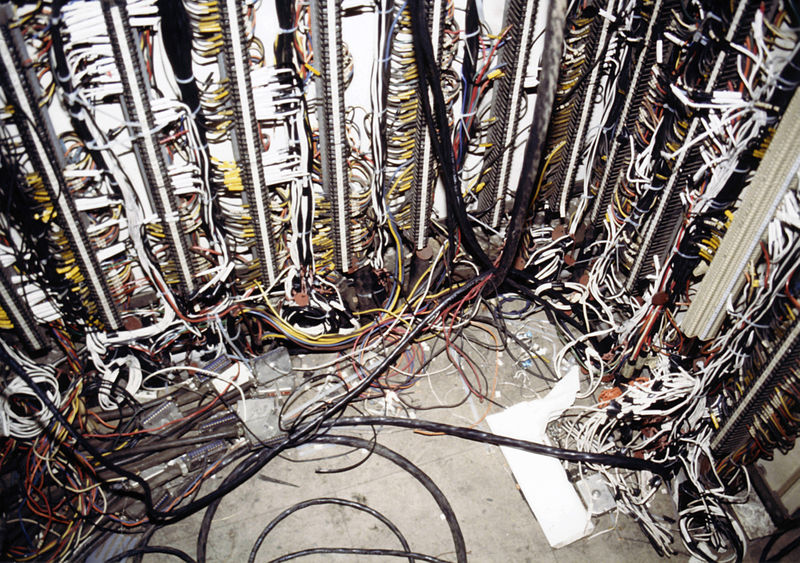Yigit Soncul is a PhD Candidate at Winchester School of Art, working on a research project under the title of Contagious and Immunogenic Images of the Network. Working with Prof. Jussi Parikka, he has helped establish a research lab, Design and Media Ecologies, which brings together staff and students from across the school. In this post, he reports on the inaugural symposium of the lab, which he co-covenened.
The Image of the Network was a one day symposium, held at Winchester School of Art, University of Southampton (WSA) on June 16, 2015. The event, which was generously funded by postgraduate research funds of the school, also marked the initiation of the new conceptual/creative lab of WSA, Design and Media Ecologies —a platform that engages with media theory and design. In this event we aimed to explore the intersections of aesthetics, politics and technology. Five presentations of the day ventured into an area upon which visual and network cultures overlap, whilst maintaining an overtly political/critical perspective. Although the event was open to public and those affiliated with the university on any level, WSA PhD students were assigned a collection of readings pertaining to the topics prior to date—hence, rendering the event, for them, an intensive workshop mapping aforementioned domains of enquiry. These texts included primary literature from French philosopher Gilles Deleuze and German art historian Hans Belting, along with titles from the speakers; Olga Goriunova, Tony D. Sampson and Jussi Parikka.
After the welcoming remarks by myself and Jussi Parikka , the day started with Dr. Tony D. Sampson’s presentation, “Waking the Somnambulist: The Capture of Affect, Attention and Memory (and Why We Need New Weapons to Stop it).” Sampson works as Reader in Digital Culture and Communications at University of East London and is one of the scholars responsible for a recently vitalised interest in the oeuvre of late 19th, early 20th century sociologist Gabriel Tarde. His book, Virality: Contagion Theory in the Age of Networks (2012), offers a refreshing take on Tardean contagion theory in relation to the contemporary technological-aesthetic condition. His focus on the day was the figure of the somnambulist(sleepwalker), which was utilised to elucidate the mode in which the contemporary subject navigates networked environments. Sampson was particularly careful in avoiding an approach that is based on a nature-culture divide, throughout his discussion on how networks mobilise life.
The second presentation of the day was delivered by Dr. Olga Goriunova, Senior Lecturer at Royal Holloway, University of London, with the title “Digital Subjects: On Persons and Singularity in Calculative Infrastructures.” Goriunova has published extensively in areas such as digital art and software studies, visual culture and aesthetics, and computational culture. She is the author of Art Platforms and Cultural Production on the Internet (2012) and editor of Fun and Software: Exploring Pain, Pleasure and Paradox in Computing (2014) among other academic literature. Goriunova’s approach during the talk was characterised by a refusal of online/offline binary. Instead she tackled the entanglement of these by employing a continuous model of subjectivity in the digital age. Goriunova does not search for digital subjectivities through venturing into what can be called as surveillance cultures. Rather, she explores the space between embodied beings and the data produced through their being in the world, to locate such digital subjectivities.
Following the presentations by guest speakers in the morning, the afternoon session continued with shorter talks by scholars from WSA. Dr. Jussi Parikka, who is Professor in Technological Culture and Aesthetics delivered a paper entitled “Smart Cities, Networks and the Industrial Residual.” Parikka has completed his media ecology trilogy in 2015 with the book A Geology of Media. His paper also employed a media ecological approach to the concept of “smart city” which emphasised the materiality of networked condition. Parikka explored the image of the city through the concept of network, alongside underlining contemporary cities as censored assemblages.
After Parikka, I presented a short paper, based on my PhD project, “Contagious and Immunogenic Images of the Network.” In parallel with the project, the paper discussed the prevalence of the image of the mask in present screen cultures through contagion theory and problematised the immunising qualities of its embodiments by organic and inorganic media alike. Dr. Jane Birkin, a PhD candidate at the time of the event, delivered the last talk of the day: “Keeping Time: Archive as Secure Back-up for the Networked Image.” Archival and distributed nature of the current temporal, textual and visual regimes were aptly woven by Birkin in her discussion of the networked image. The day ended with an hour long discussion session with all five speakers and the audience, chaired by Prof. Ryan Bishop from WSA.
